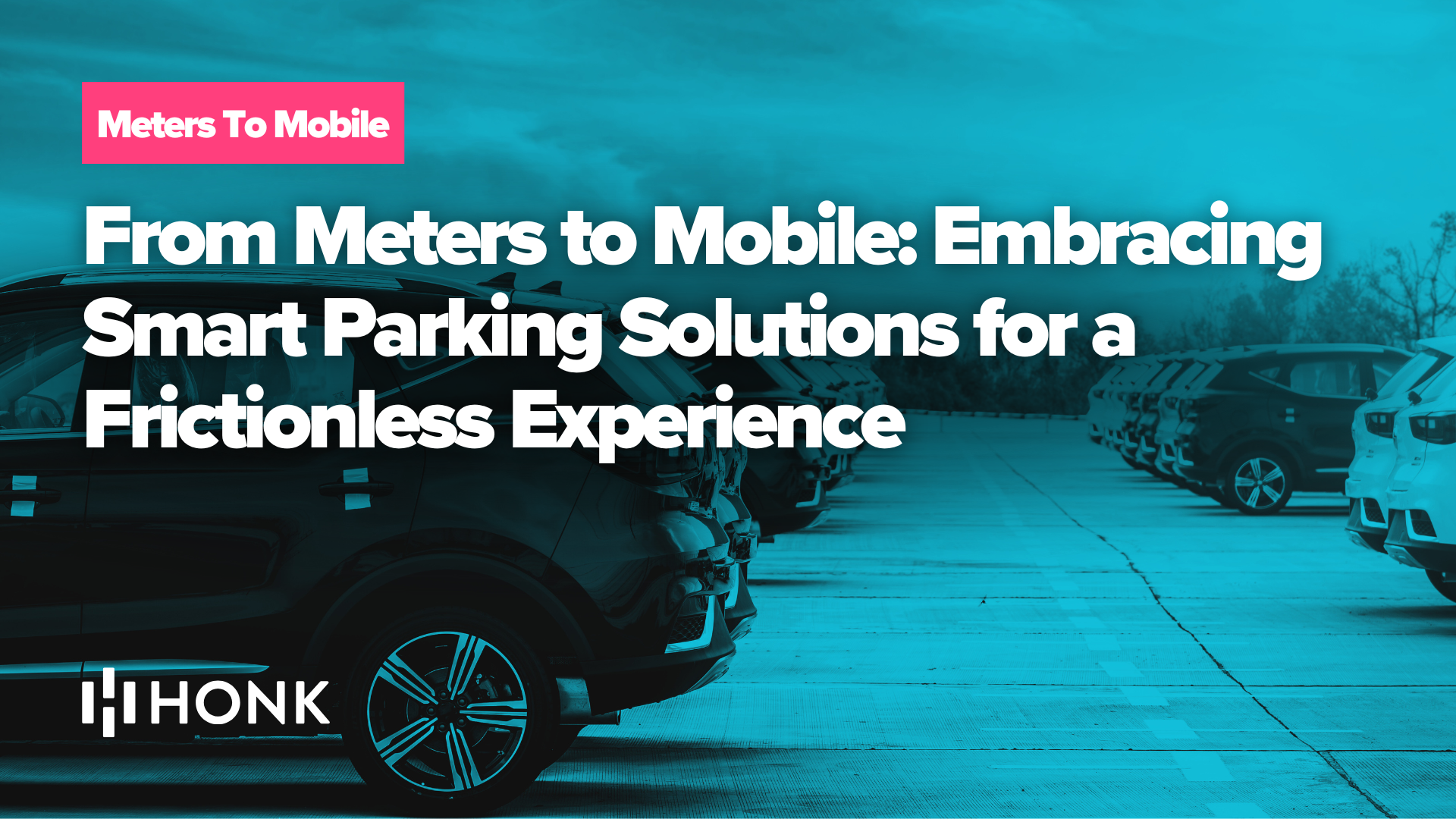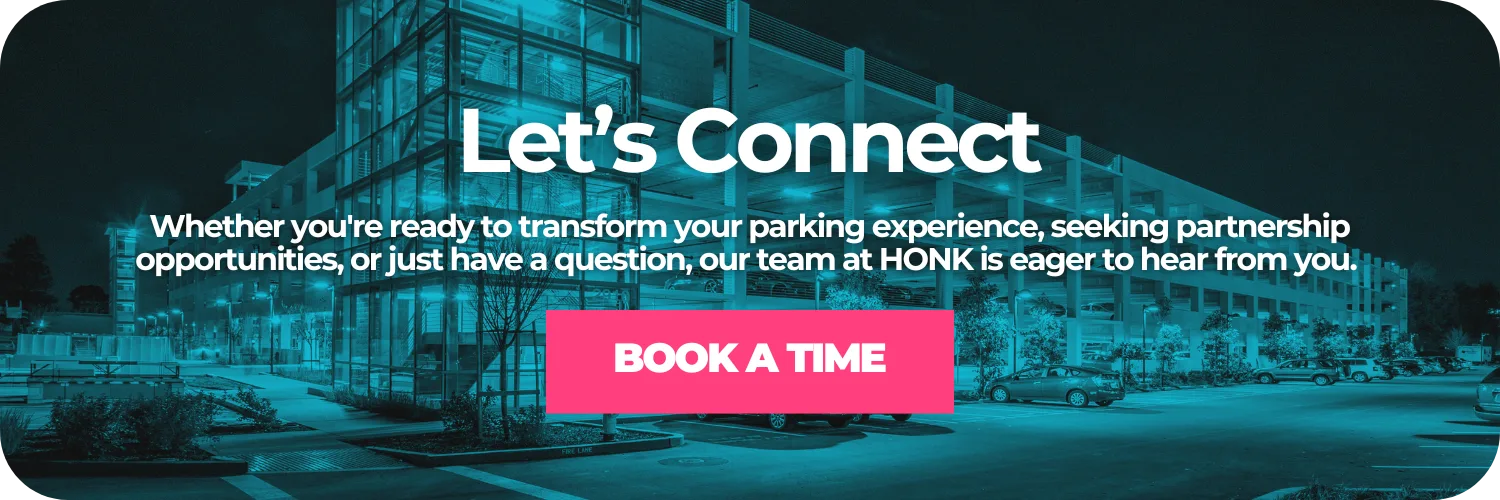Parking is undergoing a quiet revolution. The old-fashioned coin-fed meters and gated pay stations are rapidly giving way to mobile-first, smart parking solutions. For parking lot operators and owners, this evolution from clunky hardware to cloud-based software isn’t just a tech upgrade – it’s a paradigm shift that unlocks new levels of efficiency, revenue, and customer satisfaction.
The End of an Era: From Coin Meters to Cloud-Based Parking
Not long ago, managing a parking lot meant installing rows of mechanical meters or bulky pay-and-display kiosks. These traditional parking meters did the basic job of collecting payments, but at a high cost to operators and often a poor experience for drivers.
For operators, the old meter model created endless overhead. Staff had to manually collect cash boxes and maintain equipment; accounting teams reconciled stacks of tickets; and enforcement involved foot patrols chalking tires. The system was labor-intensive and prone to leakage – jammed machines, stolen coins, lost tickets, and human error all meant parking revenue left on the table.
The limitations of legacy systems made it nearly impossible to optimize or grow a parking business. Rates were static and couldn’t easily respond to demand. There was no convenient way to share occupancy information with drivers in real time.
All that began to change with the advent of mobile parking payments and cloud technology. The rise of the smartphone turned out to be the catalyst parking needed. A simple mobile app could replace a physical meter altogether, allowing drivers to find, pay, and even extend parking time from their phones.
Fast-forward to today, and digital payments have become the new norm. A vast majority of drivers – around 80% – say they prefer digital payment options for parking, and 74% of consumers prefer contactless payments because they’re faster and more convenient¹. The COVID-19 pandemic only accelerated this trend, as contactless parking technology went from a nice-to-have to a must-have for safety.
Mobile-First Parking Payments: The New Standard
One of the most visible changes in the parking industry’s digital transformation is the shift to mobile parking payments. Instead of relying on physical pay stations, leading operators now offer drivers the ability to pay with their smartphone – whether through a native mobile app, a web app, NFC tap, or SMS.
With scan-to-park QR code systems, a driver simply points their phone camera at a lot’s sign and taps to pay – often completing the entire transaction in under 15 seconds. Compare that to the minute or more it takes to pay with cash at a traditional meter. Industry data backs this up: contactless and mobile payment systems can make parking transactions up to 10 times faster than traditional methods².
Mobile payments don’t just benefit tech-savvy millennials; they cast a wider net of potential customers by offering multiple ways to pay. A well-designed parking payment solution will be inclusive: some drivers will download a dedicated app for a personalized experience, while others might prefer a quick one-time method like scanning a QR code or texting a code for instant payment.
Real-world deployments of mobile parking support these claims. The City of Kingston in Ontario expanded cashless payment systems to all its on-street parking, giving residents and visitors a safe, secure, and user-friendly way to pay for parking via mobile app or QR code scan. University campuses are also embracing the mobile parking model. At Penn State’s University Park campus, mobile payment options for campus parking eliminated the need for cash, coins, or even physical meters altogether².
Streamlining Operations with Cloud-Based Parking Management
Going mobile on the front-end is only half of the smart parking equation. Behind the scenes, the real magic happens when you combine those mobile payments with a cloud-based parking management platform for operators.
Consider one of the most tedious aspects of old parking operations: cash handling. Counting and transporting cash, rolling coins, servicing jammed bill acceptors, reconciling deposits – it’s not just a security risk but a huge drain on labor. Studies show that handling physical cash can cost businesses roughly 9.1% of the cash collected in operational overhead. Digital payment processing cuts out these inefficiencies entirely.
Automation through cloud-based parking management also slashes the labor needed for customer service and administration. Issuing permits, processing parking validations, handling refund requests – these can all be done through self-service portals and automated workflows. By adopting a cloud platform and automating payments and permits, it’s common to see labor costs drop by 20–30%.
Parking managers don’t want to be chained to a booth or an on-site server room; they want remote parking monitoring and control. Shifting to software-based parking systems means you’re no longer bound by the limitations of physical infrastructure. Need to add a new payment option or adjust pricing rules? With a cloud system, it’s typically a global setting change that updates for all users instantly.
Another benefit of going cloud: integration. Today’s parking systems are not standalone silos but part of a broader ecosystem of city services, payment platforms, and parking access control technologies. Leading platforms are designed to be platform-agnostic and connect with virtually any third-party system via open API.
Real-Time Analytics and Revenue Optimization
One of the most game-changing advantages of digital parking systems is the data they generate. Every transaction, every session, every occupancy event is captured and can be analyzed. With real-time parking analytics, you can have precise answers to questions like: What times of day are my lots 90%+ full? How long does the average customer park? Which locations are underutilized?
Modern parking management software provides a rich dashboard of real-time analytics – from transaction totals to peak occupancy times – empowering data-driven decisions for parking operators⁴. Instead of relying on gut instinct or occasional parking studies, operators can see live and historical data and adjust strategy accordingly.
This is dynamic parking pricing and allocation in action – essentially parking yield management similar to how airlines adjust fares or hotels adjust room rates based on demand. By aligning price with demand (e.g. higher rates during events or rush hour, lower rates during off-peak times), you can maximize both occupancy and revenue without adding a single new parking space.
Smart parking operators who leverage real-time data to adjust pricing and optimize space usage have increased revenue by up to 20% through these optimizations⁴. One digital parking provider found that after modernizing payments, operators could even safely oversell permit parking lots by 10–20% based on usage data.
Enhancing the Parker Experience for Lasting Loyalty
While operational efficiency and revenue are critical, an equally important aspect of modern parking solutions is the improved parker experience. Digital parking systems put the customer front-and-center, designing the parking journey to be as convenient and pleasant as possible.
For parking lot owners, parking customer satisfaction isn’t just a warm-and-fuzzy goal – it directly ties into occupancy and revenue. Friction in the parking process can literally drive customers away.
What does a frictionless parking experience look like in practice? It starts even before the driver pulls into the lot. With mobile apps and online platforms, parkers can find information easily. Upon arrival, clear signage welcomes the user. The payment process is quick and touchless: a few taps on the phone or a contactless card wave, and they’re done. If the user needs to extend their time, they can do it remotely from their phone.
Innovations like Automatic License Plate Recognition (ALPR) are making this seamless experience possible. ALPR cameras can identify a vehicle as it enters, check against a database of paid sessions or permits, and then let the vehicle out when it leaves, charging the card on file automatically for the exact duration of stay⁵.
Digital platforms can also offer perks that analog systems never could. Consider parking validations and promotions – with a cloud system, a shopping center can easily set up a promo code for free parking for the first hour to drive customer traffic, or a restaurant can validate your parking digitally through the app.
Let’s not forget the simple psychological benefit: peace of mind. A lot of parking anxiety comes from uncertainty – Will I find a spot? Will I get a ticket because I’m 5 minutes late? Smart parking solutions tackle these head-on with real-time availability information and the ability to remotely extend parking sessions.
Versatility Across All Parking Sectors
One of the beauties of today’s smart parking solutions is that they are highly versatile and can be tailored to virtually any parking environment:
- Municipal parking management: Cities and towns are adopting cloud-based parking management to handle on-street meters, off-street lots, residential permits, and enforcement in one system. Digital tools let them implement policies like dynamic pricing or time-of-day rates to manage congestion.
- University and campus parking: Universities are turning to mobile payments and digital permit systems to better serve multiple user groups (students, faculty, visitors). For campuses, parking system automation eliminates lines at the parking office and helps universities adjust parking allocations through data analytics.
- Commercial and private operators: Private parking operators are leading the charge in adopting parking management software because their profitability depends on efficiency and customer retention. Features like dynamic pricing and white-label apps help them maximize yield and build brand loyalty.
- Airports and travel hubs: Airport parking solutions have seen big shifts toward reservation systems and contactless payments. Airport travelers value the ability to book parking in advance and enjoy quick, touchless entry/exit.
- Hospital and healthcare parking: Hospitals often need to balance a patient-friendly experience with managing staff parking, visitor parking, and potentially gated facilities. Digital permits for staff and mobile payments for visitors reduce stress for all users.
Embracing the Future of Parking, Today
The evolution from coin-operated meters to mobile-first parking management is a reimagining of how parking works for the 21st century. Today’s cloud-based parking management platforms offer a level of control, insight, and flexibility that was unimaginable a generation ago.
For parking lot operators and owners, this is an invitation to step into a new era where your parking assets can be optimized like never before. You can streamline operations end-to-end, increase revenue through smarter management, reduce overhead by cutting out costly hardware, and deliver a superior experience to your customers.
The payoff is immediate: improve parking profitability through greater efficiency and capture of revenue, and improve your service quality overnight. Being forward-thinking in parking also means positioning yourself for the future of mobility. Trends like electric vehicles, autonomous cars, and smart city connectivity are on the horizon, and having a digital, software-centric parking system makes it much easier to adapt to these changes.
In essence, moving to a smart platform now is a form of future-proofing. It’s building the digital infrastructure to plug into whatever comes next in transportation. The shift from meters to mobile is about unlocking value, turning parking from a static, often frustrating necessity into a dynamic service that can delight customers and drive business results.
The future of parking is here; it’s mobile, it’s smart, and it’s frictionless. It’s HONK.




